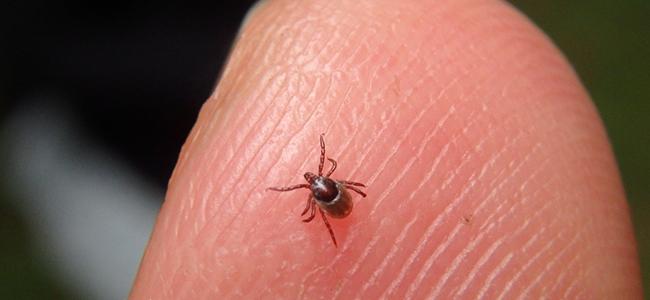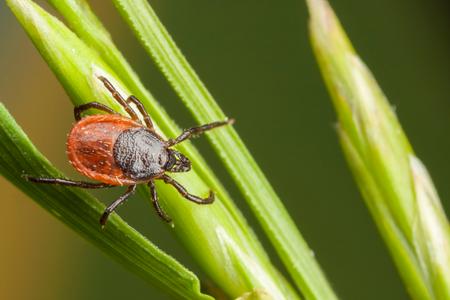
The Best Tick Control For Maryland Properties
10/01/2021
In Maryland, we have some of the most enjoyable weather (for most of the year) for playing out in the yard and enjoying time with our pets. Unfortu...
READ MORE >
04/10/2020

Unless you’ve been living under a rock over the last decade or so, you know that ticks and tick-borne diseases are becoming an increasingly large problem all over the US, but they're especially problematic here along the East Coast. Tick populations have exploded, and because of their tiny size, ticks often go unnoticed when they choose a human host on whom to feed.
Protecting yourself and your family from these harmful arachnids is paramount to the health of each of you, but this can often feel easier said than done. Thankfully, the answer may be as easy as determining that you’re missing for effective tick control around your Washington D.C. property, then correcting the problem.
American dog ticks get their name from the fact that they are only found in North America and they prefer to feed on domesticated dogs. One of the larger species of ticks, adult American dog ticks are about 3/16 of an inch in size. They are brown with white markings.
People and pets are most likely to come in contact with these pests in spring and summer. American dog ticks can transmit Rocky Mountain spotted fever and tularemia. Additionally, they can cause tick paralysis.
Blacklegged ticks are more frequently referred to as deer ticks. Like American dog ticks, they get their name from the fact that their preferred host is the white-tailed deer and they have black legs. Slightly smaller than American dog ticks, female deer ticks are about ⅛ of an inch in size. Deer ticks are reddish-brown with a darker scutum (the area between their head and abdomen).
Deer ticks are most active in the warmer months, so you can come into contact with them throughout the spring, summer, and fall. They are responsible for transmitting Lyme disease, anaplasmosis, and babesiosis.
Brown dog ticks get their name from their color and their preferred host. These ticks rarely bite humans but will do so if they can’t find a host of the canine variety. About the same size as the blacklegged tick, brown dog ticks are reddish-brown but get lighter gray when engorged.
Unlike other species of ticks, brown dog ticks prefer warm, dry, indoor locations. They can complete their entire life cycle indoors, which isn’t possible for other ticks that require more humidity than a house can provide. Brown dog ticks can transmit Rocky Mountain spotted fever to both humans and dogs. They can also transmit canine ehrlichiosis and canine babesia to dogs.
Lone Star ticks are the only ticks in the Washington D.C. area that don’t get their name from their preferred host. Instead, their name comes from the single white spot that the females have on their backs. The largest of the ticks in our area, lone star ticks are about ¼ of an inch in size. They are reddish-brown, becoming gray when engorged.
Lone star ticks cannot survive inside. They are active during the warmer months of the year and can transmit tularemia, Southern tick-associated rash illness (STARI), and more.
Ticks travel around in one of two ways. The first is by simply walking around. Ticks cannot fly, but they do walk and climb relatively fast, which allows them to get from place to place.
The other way they travel around is by being carried by their host. When ticks need a blood meal, they stand up with their front legs reaching out into the air. When a host walks by and brushes past the tick, the tick quickly crawls onto the host and finds a suitable place to attach themselves. The host can be an animal or human, and the tick will stay attached anywhere from three to ten days depending on the species of tick and the stage of life it’s in. They attach themselves by embedding their head into the host’s skin, then they stay there until they’ve gotten a sufficient amount of blood. Once done with their meal, they’ll detach themselves and drop off wherever the host happens to be.
With the exception of the brown dog tick, most ticks require warm, humid conditions to survive. They prefer areas where they remain partially hidden, but with access to passing animals and humans that they can use as a host. On your property, you’re most likely to find ticks in the areas of transition between your lawn and the woods or fields beyond. They like taller grasses, places with a lot of leaf litter, and areas with overgrowth and brush.
Brown dog ticks prefer warm, dry conditions, so they’re able to survive in the far less humid environment of your house. While it’s unlikely that you’ll end up with a brown dog tick on you, if you have a pet, you’ll want to check them regularly for these tiny parasites.
As previously mentioned when highlighting each species of tick found in Washington D.C., ticks spread many serious illnesses. While some of these diseases clear up after a matter of time, some can become chronic or even lead to death.
The biggest problem when it comes to ticks and tick-borne diseases is the fact that people often have no idea that a tick has bitten them. When ticks embed themselves into your skin, it is often painless, and they are so small, especially in the nymph stage, that you may not see them on your skin.
Lyme disease is a bacterial illness that can become chronic or even deadly if not treated promptly. Often the first sign of Lyme disease is noticed when the infamous bull’s eye rash appears, but this sign doesn’t show up with every case of Lyme disease. Other symptoms can include flu-like symptoms, fatigue, achy joints, neurological problems, paralysis, and more.
Babesiosis is a serious and life-threatening infection of the red blood cells. Symptoms include fevers, headaches, body aches, nausea, fatigue, and more.
Anaplasmosis is another disease that infects red blood cells. While not as dangerous as other tick-borne diseases, in rare cases it can lead to death. Symptoms of anaplasmosis are similar to babesiosis and include fevers, headaches, muscle aches, nausea, and more.
Rocky Mountain spotted fever is a bacterial disease that can be treated with an antibiotic if caught early enough. If not caught and treated, it can prove deadly. Symptoms of Rocky Mountain spotted fever include fevers, headaches, rashes, nausea, muscle pain, and more.
Tularemia is an infection that can be treated with antibiotics, but it can be life-threatening. Symptoms include fevers, skin ulcers, and swollen glands.
STARI is often confused with Lyme disease due to its similar symptoms, starting with the bull’s eye rash. Other symptoms include fatigue, fevers, muscle aches, and headaches. Although antibiotics are often prescribed for STARI, it usually resolves on its own.
Reducing your tick exposure must start by reducing the number of ticks on your property. This can seem like a daunting task considering their size and the fact that one female tick will lay up to 3000 eggs at one time. However, by taking a common-sense approach, you can reduce the number of ticks on your property.
To lessen the ticks on your property, you need to make your property unattractive both to ticks and the animals that might carry them into your woods or onto your lawn. There are several ways to accomplish this task:
Keep your grass cut short.
Remove lawn debris, such as fallen branches, twigs, and leaf litter.
Remove as much debris from the “transition zone” between your lawn and the woods or fields as possible.
Consider creating a barrier between your lawn and the “transition zone” with rocks, a fence, or some other type of barrier.
Remove food sources like pet food or birdseed that will draw animals to your lawn.
Keep tightly fitting lids on your outdoor garbage bins.
Remove water sources that will draw animals to your yard.
If you have a garden, fence it in.
Reduce excess moisture by ensuring proper drainage on your lawn and plenty of sunlight in landscaped areas.
If you have pets, keep them up-to-date on their flea and tick treatments.
Taking the above precautions can go a long way in reducing the tick populations on your property. However, they won’t remove all ticks. For an added barrier of protection, consider taking advantage of American Pest’s tick control service.
Our pest professionals are specially trained in the biology and habits of ticks, which allows us to carefully assess your property to determine the areas where ticks are most likely to be. This knowledge allows us to target our treatments to provide you with the most effective results.
Our monthly treatments will keep tick populations nearly non-existent on your property, protecting your family and pets from the dangerous diseases they spread. To get started with tick control for your Washington D.C. property, contact us at American Pest today.

10/01/2021
In Maryland, we have some of the most enjoyable weather (for most of the year) for playing out in the yard and enjoying time with our pets. Unfortu...
READ MORE >

08/23/2021
Ticks are considered to be some of the most dangerous arachnids around. Not only are they famous for biting people, pets, and wildlife creatures, b...
READ MORE >

07/15/2021
Each year, tick populations are on the rise. This is due to a multitude of factors, including climate change and increased tick habitat. Frederick ...
READ MORE >

06/22/2021
It's Pest Prime ...
READ MORE >

Protect your home and family from nuisance and potentially damaging pests with a Preferred Care home pest control plan. Starting at $49/month

Don't let the bed bugs bite a second longer. Contact American Pest for the most comprehensive bed bug control in the industry. Learn More

Our certified rodent control pros will put an end to your frustration by getting rid of rats and mice inside your home. Learn More

Say goodbye to wood-destroying termites in your home when you contact American Pest for expert termite control. Learn More

Trust American Pest to deliver professional backyard tick control services that are guaranteed to get results. Learn More

Don't spend the warm-weather season indoors, find out how American Pest's professional treatments get rid of mosquitoes. Learn More
Fill out the form and recieve feedback in less than 5 minutes. For immediate service please call.